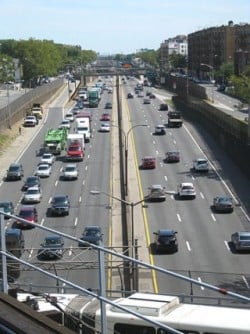It cannot be emphasized enough the need to reduce pollution in air.
According to Environment America, people in 72 metropolitan areas located across the U.S. were exposed to unhealthy particulate matter levels in 2015 on 100 days or more, information brought to bear in the concern’s new report: “Our Health at Risk: Why Are Millions of Americans Still Breathing Unhealthy Air?”
In an April 5, 2017 news release, Environment America writes: “In 2015, people living in 72 different metropolitan areas across America experienced at least 100 days with unhealthy levels of soot pollution, increasing the risk of premature death, asthma attacks and other adverse health impacts.”

“‘There’s no safe level of exposure to smog and particulate pollution,’ said Elizabeth Ridlington, Policy Analyst with Frontier Group and co-author of the report. ‘Elevated levels of air pollution – even levels the federal government says are safe for most people – hurt our health.’”
“‘And it’s not just soot and smog,’ said [Environment America Campaign Director Travis] Madsen. ‘Global warming pollution is extending the smog season across more of the year, and driving up smog levels on hot days. Along with drought, warming is also making wildfires more frequent and intense – causing additional pollution that can travel hundreds of miles,’” as cited in the release.
Highlights

Put quite bluntly, U.S. Environmental Protection Agency records of air pollution levels from across the nation with a particular focus on smog and soot are reviewed in the report.
There are numerous sources from which this harmful pollution emanates. Such comes from oil, coal and natural gas combustion, “dirty fuels,” declared Environment America in the release.
Meanwhile, key findings from the report are:
- “In 2015, people living in 72 different metropolitan areas across America experienced at least 100 days with unhealthy levels of soot pollution. Soot levels were unhealthy for more than half of the year in cities including San Bernardino, CA; Pittsburgh, PA; Fresno, CA; Philadelphia, PA; St. Louis, MO; Los Angeles, CA; Harrisburg, PA; and Steubenville, OH.
- “Residents of 34 metropolitan areas experienced more than 100 days in 2015 with elevated smog pollution. More than half of those communities were in California, joined by Denver, Phoenix, Las Vegas, Houston, Dallas, Salt Lake City, and Albuquerque.
- “49 states had at least one city with unhealthy air on at least one day during 2015.
- “(The report contains a full breakdown of air pollution monitoring data by state, and ranks the top cities.)”
(Source: “72 cities had more than 100 unhealthy air days in 2015,” Apr. 5, 2017 Environment America news release).
More could be done

National Medical Association Region 1 Chairperson and President of the Manhattan Central Medical Society Dr. Camille A. Clare stresses the need to transition from fuels that pollute the air. “‘We can clean our air by moving to 100 percent clean, renewable energy across our whole society, which will benefit our patients and our communities,” the medical professional said as cited in the release.
Moreover, programs like the Regional Greenhouse Gas Initiative in nine northeast states – a program that has been tremendously successful in limiting power plant pollution and fueling clean-energy investment – could be strengthened, according to Environment America.
“‘The more we cut pollution,’ concluded Madsen, ‘the sooner dirty air days can become a thing of the past.’”
Words that could not be truer.
This post was last revised on Dec. 2, 2020 @ 3:07 p.m. Pacific Standard Time.
– Alan Kandel
I recently invested in a air filter mask and though at first I thought second about wearing it, I now feel safer about using it. Why breathe in dirty air if we stay outdoors longer than we should? Exercise and yard work should really be taken seriously if people want to continue doing things outside by taking precautions. The biggest public fallacy is that the government and the cities are going to advertise that they have dirty air and that you should take measures to protect your health.
It depends on how you see the situation. from a personal and selfish situation we do need better air quality, but since the world appears to be over-populated it would be a better global thing if air pollution were linked to population, with the numbers of people to depend on the amount of pollution they potentially create.